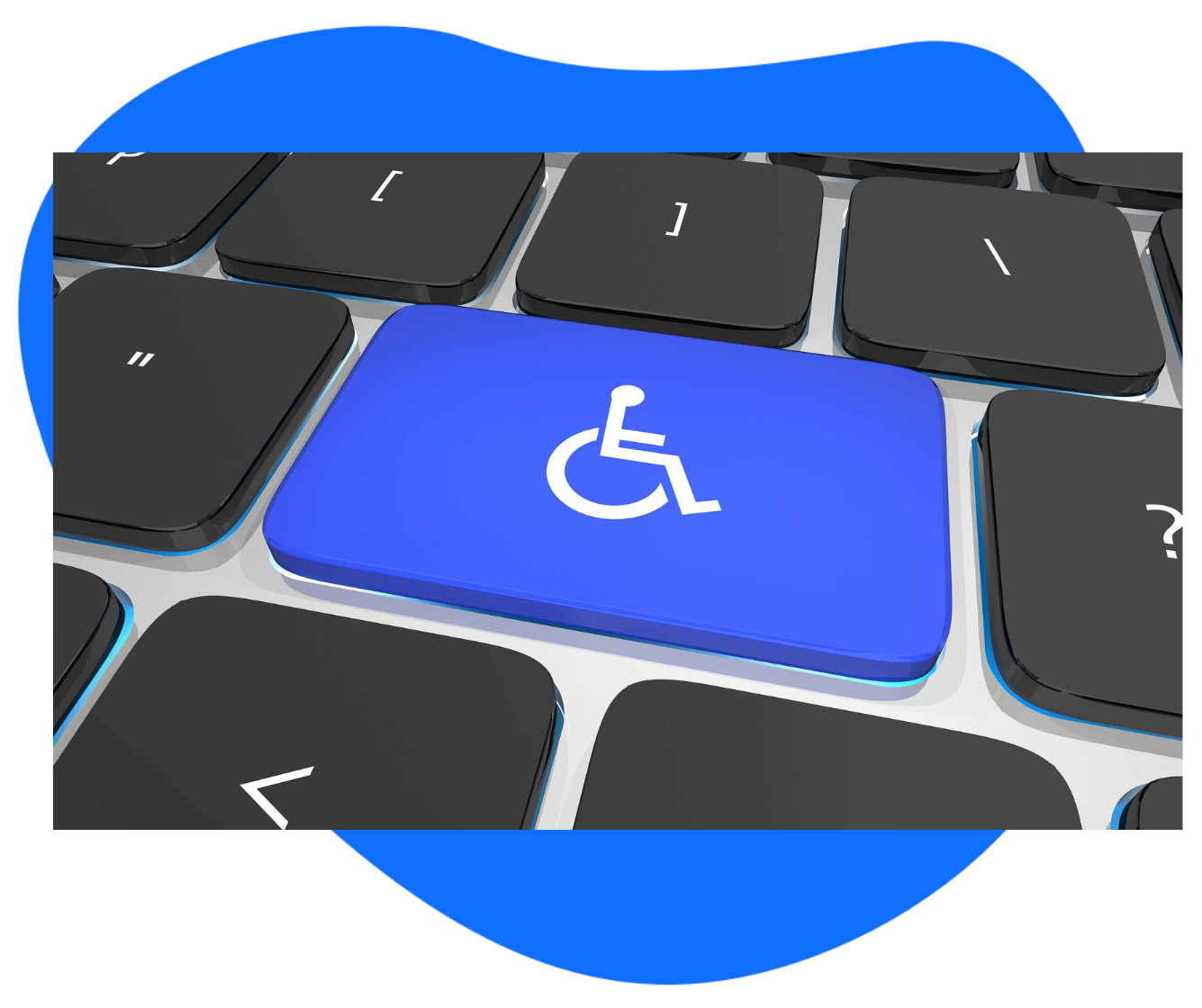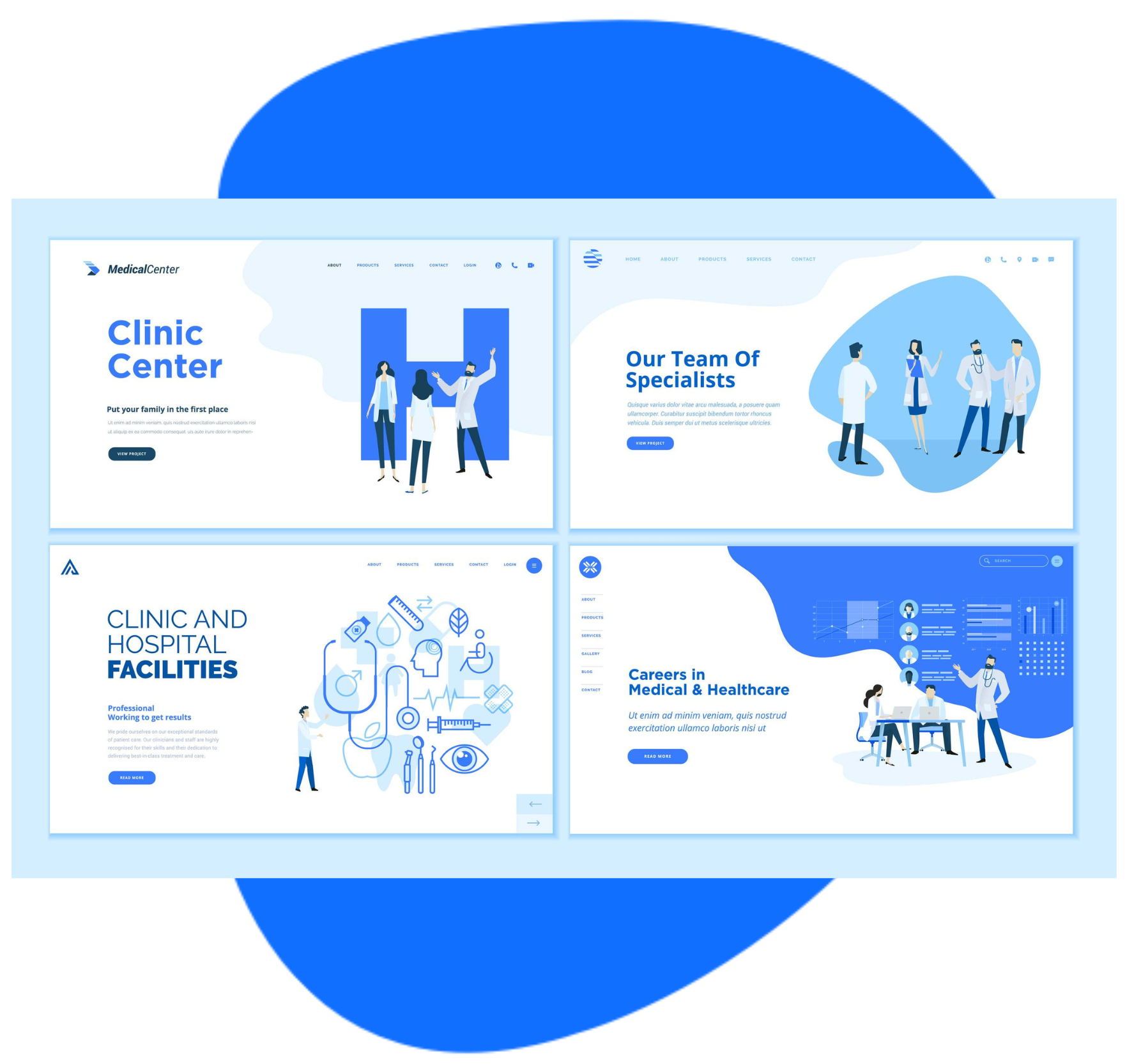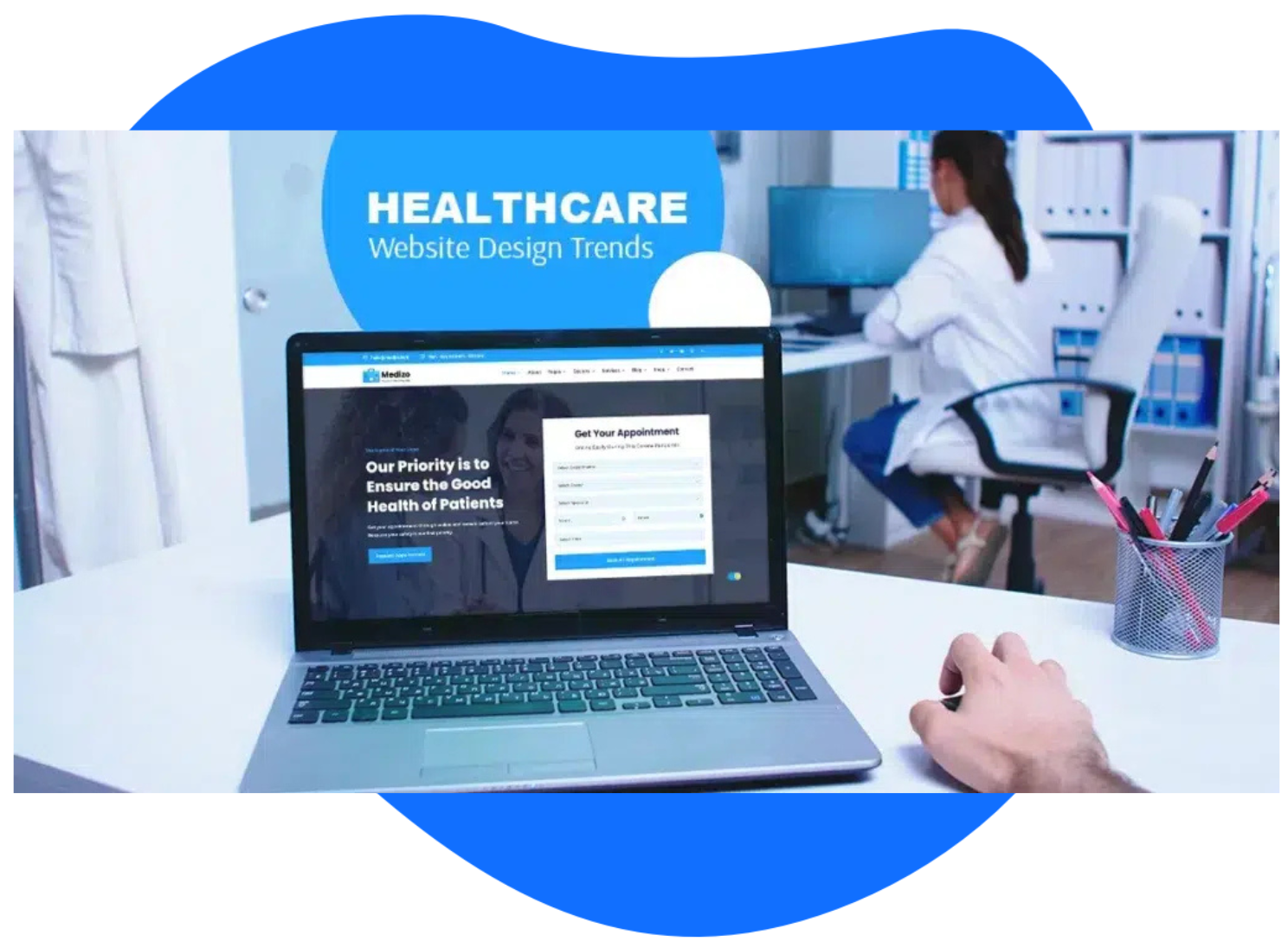As healthcare increasingly shifts online, maintaining a legally compliant and ethically sound website is critical. Beyond meeting regulatory requirements, safeguarding patient information also cultivates greater trust. Despite the complexity of these standards, overlooking them can lead to serious consequences. A single data breach can cost a healthcare organization about $9.23 million, underscoring the financial and reputational risks at stake.
Many healthcare websites still have gaps in compliance. While 95% of health information is stored electronically, only 27% of healthcare sites fully meet HIPAA requirements. Leaders in the field recognize the urgency, with 77% expressing unpreparedness for new technologies and compliance-related challenges. Organizations that address these gaps proactively can both safeguard patient data and build stronger relationships in a rapidly evolving digital environment.
The Importance of Legal and Ethical Standards in Healthcare Websites
Healthcare websites must do more than simply convey medical information; they also have to adhere to strict legal and ethical principles. Doing so helps preserve patient trust, protect sensitive data, and ensure the website remains both reliable and credible.
Understanding Legal Regulations
Regulatory frameworks such as HIPAA in the United States or GDPR in Europe exist to protect patient privacy and enforce transparency. Non-compliance can result in steep fines, lawsuits, and lasting damage to an organization’s reputation. These regulations often require:
- Detailed record-keeping of patient interactions and consent forms.
- Secure handling, sharing, and storage of Protected Health Information (PHI).
- Clear and accessible privacy policies that outline how patient data is used.
Ethical Considerations for Healthcare Websites
In addition to legal obligations, healthcare websites should maintain high ethical standards, such as:
- Respect for Patient Autonomy: Provide clear, accurate information so individuals can make informed decisions about their own care.
- Privacy and Confidentiality: Limit access to personal health data and avoid unnecessary data sharing.
- Equity and Fairness: Ensure services are inclusive and accessible, regardless of a patient’s background or abilities.
Upholding these values protects both patient welfare and the organization’s standing in the healthcare community.
HIPAA Compliance for Healthcare Websites
Enforced in 1996, the Health Insurance Portability and Accountability Act (HIPAA) mandates safeguarding patients’ medical information. It encompasses several key rules:
1. Privacy Rule: Governs the use and disclosure of PHI.
2. Security Rule: Establishes protocols to secure PHI stored or transmitted electronically.
3. Enforcement Rule: Details penalties for non-compliance, which can be severe if breaches are not reported appropriately.
Essential HIPAA Requirements
Any website that deals with patient information must:
- Encrypt Data: Whether at rest or in transit, PHI should always be encrypted to mitigate unauthorized access.
- Maintain Breach Logs: Keep comprehensive records for at least six years
- Notify Affected Parties: If a breach impacts over 500 people, notify them, the U.S. Department of Health and Human Services (HHS), and the media within 60 days.
Steps to Ensure HIPAA Compliance
1. Regular Risk Assessments: Identify system vulnerabilities and prioritize corrective measures.
2. Two-Factor Authentication: Strengthen login security by adding an extra layer beyond passwords.
3. Consistent Encryption Practices: Make sure data is encrypted from end to end, as many websites fail to do this comprehensively.
Despite the importance of compliance, only about 50% of healthcare websites follow HIPAA standards. With around 50% experiencing a data breach in the past year, the financial and reputational stakes remain high.
Data Privacy and Confidentiality
With 95% of health information now electronic, safeguarding patient data is both a legal requirement and a moral responsibility. Whether it’s electronic health records (EHRs) or personal details submitted through online forms, robust data protection measures must be in place.
Protecting Patient Information
Data breaches not only expose organizations to legal liabilities but also erode patient trust. A 2018 study showed that specific algorithms could identify a large percentage of individuals in certain databases, emphasizing the need for strict security protocols.
Key Strategies:
- Develop audit trails to log user access and track changes.
- Update network security systems regularly to address vulnerabilities.
- Offer regular staff training, focusing on privacy laws and secure data handling.
Implementing Secure Data Storage Solutions
Complying with NIST guidelines on confidentiality, integrity, and availability helps reduce risks. Using trusted encryption services, employing strong access controls, and promptly patching software are all vital parts of a secure healthcare infrastructure.
Globally, laws differ (e.g., GDPR in Europe, HIPAA in the U.S.), but the fundamental principle remains: protect patient data and uphold user trust by maintaining clear, consistent security standards.
Accessibility and Inclusivity of Portals
Healthcare websites must be usable by everyone, including people with various disabilities. This is both a legal requirement under regulations like the Americans with Disabilities Act (ADA) and an ethical obligation.
Understanding Vulnerable Populations
In the United States, roughly one in four adults live with a disability. Older adults, in particular, often face additional barriers such as hearing or vision loss. If websites are not fully accessible, these groups may struggle to book appointments, retrieve medical records, or educate themselves about health conditions.
Legal Mandates for Accessibility
ADA: Covers digital platforms, requiring them to be accessible for people with disabilities.
Section 508: Impacts U.S. federal agencies and recipients of federal funding.
HIPAA: Includes guidelines on accessible digital communication.
WCAG: Offers detailed global standards for making digital content accessible to the widest range of users.
Best Practices for Inclusive Design
1. Provide Alternative Text: Ensure screen readers can convey images to visually impaired users.
2. Use Captions: Offer subtitles for video content.
3. Conduct Manual Testing: Automated tools identify some issues, but comprehensive audits are essential for uncovering the rest.
Not only do accessible websites meet ethical and legal obligations, but they also tend to rank better in search engines and foster higher user satisfaction overall.
Security Measures for Healthcare Websites
Cyber threats against healthcare sites have soared by 125% in recent years, making strong security protocols indispensable. A single breach can cost an organization upwards of $2.2 million and seriously damage patient trust.
Core Security Principles
- Annual Security Audits: Regularly evaluate systems to spot vulnerabilities.
- Restricted Access: Enforce role-based permissions and track logins.
- Data Encryption: Protect sensitive records, whether stored on servers or transmitted across networks.
- Preparedness and Incident Response: Use well-defined breach response plans to reduce downtime and financial damage.
Because healthcare data can be up to 20 times more valuable on the dark web compared to other information, the industry is a frequent target. Adequate training, frequent system updates, and monitoring tools that utilize AI to detect anomalies can significantly reduce the risk of compromise
Ensuring Your Healthcare Website Meets Legal and Ethical Standards
Organizations that maintain systematic oversight of their digital platforms are more likely to remain compliant. This involves routine checks, timely updates, and a culture that values transparency and integrity.
Audit and Assessment Procedures
- Compliance Checklists: Tailor them to meet HIPAA, ADA, and other local regulations.
- Data Privacy Reviews: Confirm PHI handling aligns with consent forms and stated policies.
- Accessibility Audits: Evaluate against WCAG guidelines and address any issues promptly.
- Security Assessments: Identify and mitigate potential entry points for cybercriminals.
Regular Monitoring and Updates
- Continuous Monitoring: Automate alerts for suspicious activities or non-compliant configurations.
- Frequent Staff Training: Keep personnel informed about updates in regulations and best practices.
- Prompt Corrections: Address any findings swiftly, whether they’re accessibility problems or security gaps.
By adopting these measures, healthcare organizations create a safer, more trustworthy environment for their patients and site visitors.
Effective Use of Web Portals in Healthcare
Online portals have transformed patient care and operational efficiency. A 2015 report indicated that 69% of hospitals enable patients to view, download, and share their medical records. This level of transparency and convenience empowers individuals to take control of their health.
Benefits of Web Portals
- Improved Access: Patients can log in anytime to retrieve their records or schedule visits.
- Enhanced Communication: Secure messaging facilitates quicker, more direct conversations.
- Administrative Efficiency: Less paper-based work frees staff for more critical tasks.
- Better Patient Education: Centralizing resources allows patients to learn more about their conditions.
Challenges and Solutions
- Data Privacy Concerns: Address them through advanced encryption and strict access controls.
- Complex Interfaces: Simplify navigation so portals are user-friendly for all age groups and skill levels.
- Legal Compliance: Maintain continuous oversight to ensure HIPAA and other relevant regulations are satisfied.
Patient Health Literacy and Education
A well-designed healthcare website not only meets standards but also enhances health literacy. Since only 12% of U.S. adults are proficient in health literacy, educational resources can help individuals make better, more informed healthcare decisions.
Importance of Patient Education
Empowering patients with trustworthy online information leads to better treatment adherence and improved health outcomes. Clear communication also helps reduce errors and misunderstandings.
Methods to Improve Health Literacy
- Teach-Back Method: Encourage staff to verify that patients correctly understand care instructions.
- Toolkit Resources: Make use of frameworks like the Health Literacy Universal Precautions Toolkit for consistent communication.
- Accessible Website Content: Present key health information in simple, jargon-free language and user-friendly layouts.
Role of Transparency in Building Trust
Transparent communication fosters a sense of confidence and mutual respect between patients and healthcare providers.
Communicating Clearly with Patients
Encourage open dialogue by making policies, pricing, and service details readily available. Research indicates that hospitals with clearer communication channels experience fewer errors, as patients feel more comfortable voicing concerns.
Transparent Practices for Healthcare Providers
Clinics and hospitals that share metrics like patient satisfaction scores or treatment success rates often see increased patient engagement and loyalty. Openness about patient privacy protections can also alleviate concerns and encourage honest feedback.
Adhering to Professional Codes of Ethics
Ethical guidelines such as the AdvaMed Code of Ethics play a pivotal role in healthcare. They address:
1. Compliance with Regulations: Aligning all activities with state and federal laws.
2. Data Integrity: Guaranteeing that all information, from clinical records to financial transactions, remains accurate and confidential.
3. Ongoing Education: Providing regular training so staff remain current with regulatory changes and ethical considerations.
These practices nurture a culture where respectful patient care and organizational accountability are prioritized every day.
Future Trends in Healthcare Website Compliance
The healthcare compliance landscape will become increasingly complex as technology evolves. By 2024, more regulations are likely to extend not only to hospitals but also to digital startups, telehealth providers, and other service partners.
Emerging Areas to Watch
- AI and Big Data: While AI can quickly detect compliance issues and improve care, it also raises concerns about data bias and privacy.
- VR and AR: As these tools grow in medical training and patient education, new standards for data security and patient safety will be necessary.
- Heightened Penalties: Regulators are poised to impose larger fines and conduct more frequent audits for HIPAA breaches and other violations.
Staying informed and nimble will be crucial. Healthcare organizations must adapt their data protection policies, invest in new security technologies, and remain transparent to build ongoing trust with patients and regulatory bodies alike.
Conclusion
Achieving legal and ethical standards for your healthcare website is an ongoing process rather than a one-off task. From HIPAA compliance to web accessibility, each requirement ensures a more secure, inclusive, and trustworthy online platform for patients.
A well-managed site combines robust data protection with transparent communication and user-friendly features. As regulations and technologies rapidly evolve, consistent monitoring, timely updates, and a commitment to ethical best practice become indispensable.
By adopting these strategies, healthcare organizations can confidently navigate digital transformation—reinforcing patient trust, minimizing potential risks, and delivering higher standards of care in an increasingly connected world.











